Dealing with a groundhog problem? We’ve researched and tested the most effective groundhog repellents and deterrents to help you protect your property. This comprehensive guide will walk you through the best commercial products and DIY solutions to keep these destructive rodents at bay.
Quick Picks: Best Groundhog Repellents
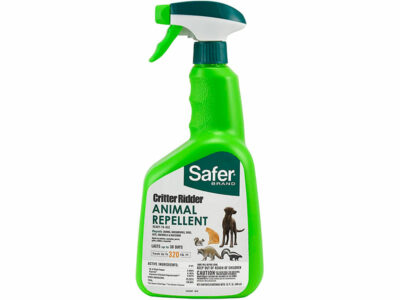
Editor’s Choice
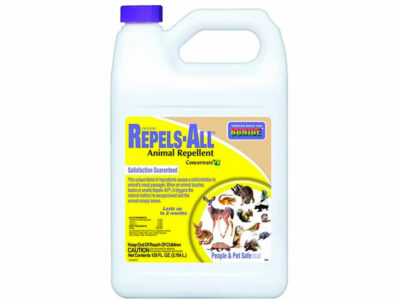
People’s Choice
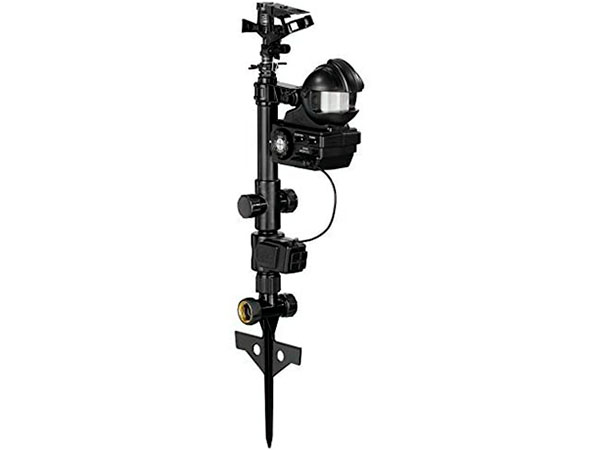
Best Deterrent
- Understanding the Groundhog Problem
- Effective Groundhog Repellent Strategy
- Best Liquid Groundhog Repellents
- Best Granular Groundhog Repellents
- Electronic Groundhog Deterrents
- Effective DIY Groundhog Repellent Solutions
- Groundhog Fencing Solutions
- Groundhog Repellent Effectiveness Comparison
- Creating a Comprehensive Groundhog Control Plan
- Frequently Asked Questions
Understanding the Groundhog Problem
Groundhogs (also known as woodchucks, whistle pigs, or land beavers) are large rodents that can cause significant damage to your property through their burrowing, digging, and feeding habits. These creatures are skilled diggers that create extensive tunnel systems and can consume large amounts of garden plants.
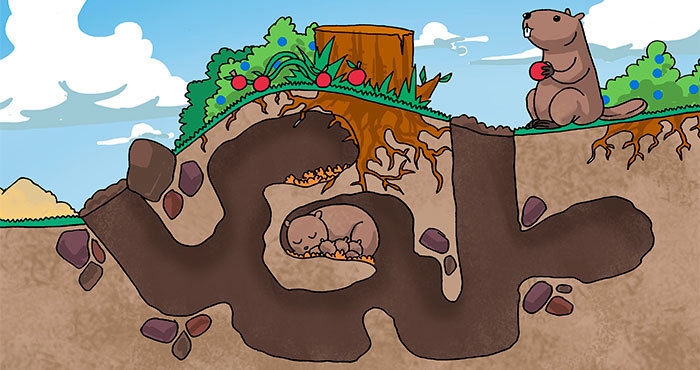
Activity Season
Groundhogs are most active from early spring through fall. They hibernate from late October/early November until late February/March, with breeding occurring in March and April.
Common Damage
Garden vegetables, flowers, bushes, shrubs, trees, and clover are all susceptible to groundhog feeding damage.
Burrowing Issues
Groundhog burrows can damage foundations, create tripping hazards, and provide entry points for other pest animals.
Effective Groundhog Repellent Strategy
A successful groundhog control strategy typically requires a combination of approaches. The most effective plans incorporate multiple types of repellents and deterrents while also limiting food sources and shelter options.
Before implementing any repellent strategy:
- Identify burrow locationsLook for large holes (6-12 inches in diameter) with mounds of dirt at the entrance.
- Determine travel routesObserve paths groundhogs take to food sources like gardens or fruit trees.
- Take preventative measuresRemove potential food sources and shelter options.
- Choose appropriate repellentsSelect products based on your specific situation and the areas you need to protect.
Best Liquid Groundhog Repellents
Liquid repellents are ideal for protecting specific plants, garden areas, and structures from groundhog damage. They typically work by creating unpleasant odors or tastes that deter groundhogs from feeding or entering treated areas.
Safer Brand Critter Ridder Animal Repellent
Editor's ChoiceHow Does It Work
How to Use
- Shake the ready-to-use spray bottle well before application
- Apply directly to plants, surfaces, and problem areas where groundhogs feed or travel
- Spray thoroughly on target areas until slightly wet
- Reapply every 30 days or after heavy rainfall
- For best results, apply in dry weather
- Ready-to-use formula requires no mixing
- OMRI Listed for use in organic gardening
- Safe for use around children and pets when used as directed
- Long-lasting formula provides up to 30 days of protection
- Can be used on plants, structures, and around burrow entrances
- Must be reapplied after heavy rainfall
- The pepper-based formula can irritate eyes or skin during application
- May require more frequent application during active growing seasons
BONIDE Repels All Animal Repellent
People's ChoiceHow Does It Work
How to Use
- Mix 1 part concentrate with 8 parts water
- Apply with a pump sprayer to target plants and areas
- For best results, apply in the evening when groundhogs are less active
- Create a perimeter around gardens or protected areas
- Reapply every 2 months or after heavy rainfall
- Concentrated formula is economical for large areas
- Biodegradable and safe for use around edible plants
- Long-lasting protection for up to 2 months
- Effective against multiple animal pests including groundhogs, rabbits, and deer
- Won't harm plants when used as directed
- Strong odor during and shortly after application
- Requires mixing before use
- May need more frequent reapplication in areas with heavy groundhog activity
3. I Must Garden Woodchuck Repellent
I Must Garden Woodchuck Repellent uses a botanical blend of white pepper, rosemary oil, thyme, and garlic to create an environmentally-friendly solution. This concentrate formula is specifically designed to protect gardens from groundhog damage while being safe for use around food plants.
Key Features:
- Plant-safe formula won’t burn foliage
- Can be used throughout growing season
- Pleasant scent to humans but repulsive to groundhogs
- Rain-resistant formula with sticking agents
4. ORTHO Animal B Gon Natural Spray
ORTHO Animal B Gon uses putrescent egg solids (1.53%) to irritate groundhogs’ sense of smell and taste. This ready-to-use spray creates a learning response where groundhogs associate the unpleasant sensation with your yard and learn to avoid the area.
Key Features:
- No mixing required
- Safe for use around plants and garden vegetables
- Weather-resistant formulation
- Remains effective for up to 30 days
Best Granular Groundhog Repellents
Granular repellents are excellent for creating perimeter barriers around gardens, properties, and structures. They’re particularly effective for treating areas around burrow entrances and along groundhog travel routes.
Granular repellents are most effective for:
Burrow Deterrence
Sprinkle around burrow entrances to encourage groundhogs to relocate
Perimeter Protection
Create a defensive barrier around gardens, yards, and structures
Plant Protection
Apply around valuable plants to prevent groundhog feeding damage
5. Safer Brand Critter Ridder Granules
Safer Brand Critter Ridder Granules contain the same effective blend of capsaicin, piperine, and black pepper oil as the liquid version but in an easy-to-spread granular form. This makes it ideal for creating protective barriers around gardens and structures.
Key Features:
- OMRI Listed for organic gardening
- Provides up to 30 days of protection
- Can be applied directly from the container
- Effective for both deterrence and driving away existing groundhogs
6. Shake Away Fox Urine Granules
Shake Away Fox Urine Granules use predator scent to trigger fear responses in groundhogs. The granules contain 5% fox urine, which signals danger to groundhogs and other prey animals, causing them to avoid treated areas.
Key Features:
- All-natural ingredients
- No harsh chemicals
- Easy application with shaker container
- Rainproof formula with time-release technology
Electronic Groundhog Deterrents
Electronic deterrents offer a maintenance-free alternative to chemical repellents. These devices use motion-activated mechanisms to startle and frighten groundhogs away from protected areas.
Orbit Yard Enforcer Motion-Activated Sprinkler
Best DeterrentHow Does It Work
How to Use
- Connect to a standard garden hose
- Insert 4 AA batteries in the battery compartment
- Adjust the detection distance and spray distance settings
- Position facing the area where groundhogs typically enter
- Select day only, night only, or 24-hour operation mode
- No chemicals or harmful substances
- Intelligent sensing technology reduces false triggers
- Protects large areas up to 1,600 square feet
- Adjustable spray distance (up to 35 feet) and width (120 degrees)
- Day/night detection modes for 24-hour protection
- Water-conserving design uses only 2-3 cups per activation
- Requires access to water source/garden hose
- Battery life varies depending on frequency of activations
- May need seasonal adjustments for optimal performance
- Not effective during freezing temperatures when water can't be used
8. Havahart 5277 Critter Ridder Motion-Activated Sprinkler
The Havahart Critter Ridder Motion-Activated Sprinkler offers similar features to the Orbit model, delivering bursts of water when groundhogs enter the protected area. It covers up to 1,600 square feet with its 120-degree detection range.
Key Features:
- Intelligent sensing to reduce false triggers
- Day/night detection options
- Water-efficient design
- Adjustable spray distance and width
- Runs on 2 AA batteries
Effective DIY Groundhog Repellent Solutions
If you prefer homemade solutions, several household items can be effective groundhog repellents. These natural options are typically safe for garden use and can be prepared with items you may already have on hand.
Hot Pepper Solution
Mix crushed habanero or cayenne peppers with water and a few drops of dish soap. Spray around burrow entrances and garden perimeters. Reapply after rain.
Used Kitty Litter
Spread used kitty litter around burrow entrances. The scent of predator urine creates a fear response in groundhogs, encouraging them to relocate.
Castor Oil Mixture
Mix 1/4 cup castor oil with 2 tablespoons dish soap in 1 gallon of water. Spray around burrows and garden perimeters. This creates an unpleasant taste and smell.
Groundhog Fencing Solutions
Physical barriers can be one of the most effective long-term solutions for groundhog problems, especially for protecting gardens and other high-value areas.

For effective groundhog fencing, address both their climbing and digging abilities:
Effective Groundhog Fence Design
- Use wire mesh with openings no larger than 3 inches × 3 inches
- Extend fence at least 3 feet above ground
- Create an L-shaped underground barrier extending 12 inches down and 12 inches outward to prevent digging
- Add an outward-facing 12-inch wide overhang at the top to prevent climbing
- Ensure gates fit tightly and extend to ground level
Groundhog Repellent Effectiveness Comparison
Based on research and user experiences, here’s how different groundhog repellent methods compare across key factors. This can help you choose the best solution for your specific situation.
| Repellent Method | Initial Effectiveness | Long-Term Effectiveness | Ease of Use | Cost | Safety | Weather Resistance |
|---|---|---|---|---|---|---|
| Liquid Pepper-Based Repellents (Safer Brand Critter Ridder) |
High | Medium | High | $$ | High | Medium |
| Putrescent Egg Repellents (BONIDE, Ortho) |
High | Medium | High | $$ | High | Medium |
| Granular Repellents (Safer Brand, Shake Away) |
Medium | Medium | Very High | $$ | High | Low |
| Motion-Activated Sprinklers (Orbit, Havahart) |
Very High | High | Medium | $$$ | Very High | High |
| Blood Meal | High | Medium | High | $$ | High | Low |
| Homemade Pepper Spray | Medium | Low | Medium | $ | High | Very Low |
| Used Kitty Litter | Medium | Low | High | $ | Medium | Very Low |
| Castor Oil Solution | Medium | Low | Medium | $ | High | Low |
| Fencing (Properly Installed) | Very High | Very High | Low | $$$$ | Very High | Very High |
| Predator Urine (Fox, Coyote) |
Medium | Low | High | $$ | Medium | Very Low |
Effectiveness: Very Low → Very High
Ease of Use: Low (requires significant effort) → Very High (minimal effort)
Cost: $ (under $15) → $$$$ (over $100)
Safety: Low (requires caution) → Very High (completely safe)
Weather Resistance: Very Low (needs constant reapplication) → Very High (all-weather durability)
Creating a Comprehensive Groundhog Control Plan
The most successful groundhog control strategies combine multiple approaches and address the root causes of groundhog problems. Follow these steps for long-term effectiveness:
- Habitat modificationRemove brush piles, wood stacks, and tall grass that provide shelter. Trim lower branches of shrubs to eliminate hiding spots.
- Food source reductionHarvest fruits and vegetables promptly. Clean up fallen fruit. Consider planting groundhog-resistant plants.
- Strategic repellent applicationUse liquid repellents on plants and structures, granular repellents for perimeters and near burrows, and electronic deterrents in high-traffic areas.
- Barrier installationInstall proper fencing around high-value areas like gardens and orchards. Use L-shaped underground barriers to prevent burrowing.
- Monitoring and maintenanceRegularly inspect for new burrows or activity. Reapply repellents according to product instructions. Adjust strategies as needed based on results.
Frequently Asked Questions
When is the best time to apply groundhog repellents?
Early spring (February-March) is the optimal time to apply groundhog repellents as this is when groundhogs emerge from hibernation and begin establishing territories. This timing allows you to deter them before they settle in and create extensive burrow systems on your property.
For ongoing protection, reapply repellents according to product instructions, typically every 30-60 days or after heavy rainfall.
Are groundhog repellents safe to use around vegetable gardens?
Many commercial groundhog repellents are formulated to be safe around edible plants, but always check product labels for specific instructions. Natural repellents like OMRI-listed products are generally the safest options for vegetable gardens.
For added safety, apply repellents around the perimeter of gardens rather than directly on food plants, and always wash produce thoroughly before consumption.
How effective are ultrasonic groundhog repellers?
Scientific evidence for the effectiveness of ultrasonic repellers against groundhogs is limited and inconsistent. While some users report success, most wildlife experts and researchers consider them less reliable than other deterrent methods.
If you choose to try ultrasonic repellers, use them as part of a comprehensive control strategy that includes other proven methods like physical barriers and scent-based repellents.
How can I tell if groundhogs have abandoned their burrows?
To determine if a burrow is abandoned, lightly plug the entrance with loose soil, crumpled newspaper, or straw. Check the burrow for 3-5 consecutive days – if the material remains undisturbed and you see no fresh dirt or tracks, the burrow is likely abandoned.
You can also sprinkle flour around entrances to detect footprints or use a trail camera to monitor activity before sealing burrows permanently.
What plants naturally repel groundhogs?
Several plants have natural properties that groundhogs tend to avoid, including:
- Herbs: Mint, lavender, oregano, thyme, rosemary
- Flowers: Marigolds, geraniums, nasturtiums
- Vegetables: Garlic, onions, peppers
- Plants with fuzzy leaves: Lamb’s ear, yarrow
Planting these around the perimeter of gardens can provide some natural deterrence, but they work best as part of a broader control strategy.
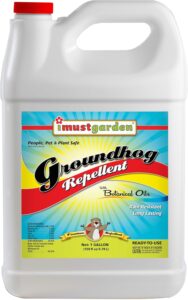

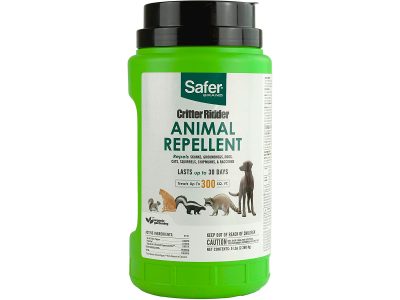

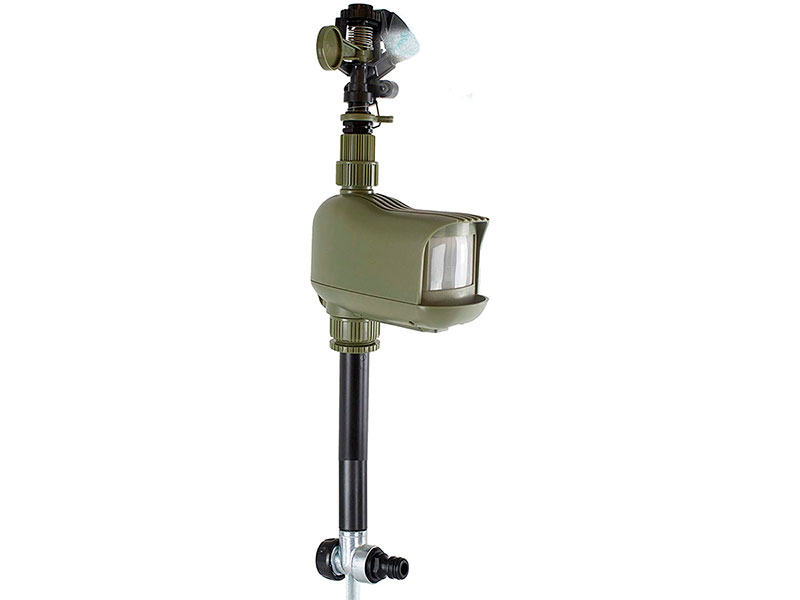



I threw a few moth balls under the shed where groundhogs had lived a summer or two and they moved out, did not come back . The area was open, I just tossed the moth balls back far as I could.
I started using peppermint to rid of of spiders,mice,chipmunks and ground squirrels and it really does work… But now I have a groundhog problem I really don’t care what my state allows im going to kill them!!! I live in a residential neighborhood and not supposed to shoot guns in town I’ve seen these creatures eat cats there not scared of them… My dog Will not go into my garage she is petrified of these things I know there are atleast 3 but I cannot find a hole or so called burrow… Any suggestions to this comment please feel free to leave s
they make powerful .22cal airguns now that may do the job. i shot thru both sides of a 5 gallon bucket with mine and it much quieter than a firearm. the problem is woodchucks are really skittish. I have one under my back porch and am looking at removal options
My neighbor is a slob and after repeatedly asking to please at least put lids on their trash cans nothing works I am p—-D now Mr G hoge has moved into my yard